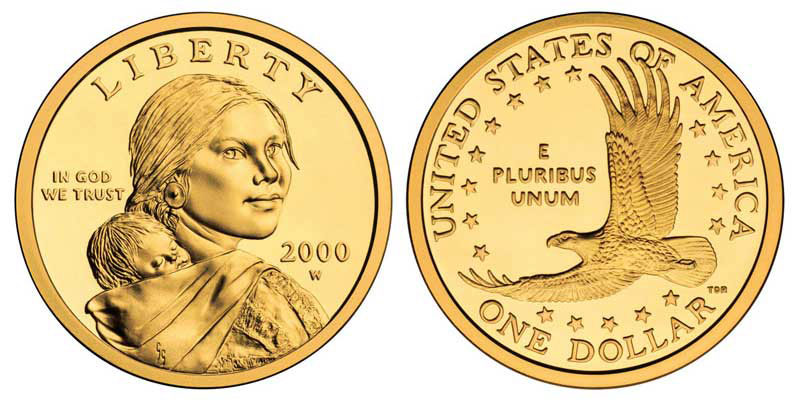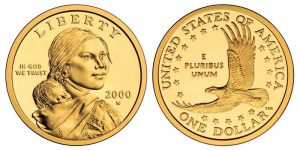
Sacagawea and the Dollar Coin
 The Federal Government Created the DollarCoin Design Advisory board to try and create an outline for what should appear on the dollar coin. The board consisted of the President of the American Numismatic Society, and the Under Secretary of the Smithsonian. It also utilized the experience of an architect, a sculptor, a scholar and a member of congress for guidance.
The Federal Government Created the DollarCoin Design Advisory board to try and create an outline for what should appear on the dollar coin. The board consisted of the President of the American Numismatic Society, and the Under Secretary of the Smithsonian. It also utilized the experience of an architect, a sculptor, a scholar and a member of congress for guidance.
The committee looked at 17 separate concepts before it finally settled on one that they felt would be best. Public debate on the subject took place throughout 1998, and in June of that year the committee announced that the coin would feature Sacagawea.
Sacagawea was a Shoshone Indian who lived a life of both myth and mystery. Although stories survived through oral tradition, not much is definitively known.
She was captured by a war band and sold into slavery as an 11 year old girl. Sometime after that, she was either given away or sold to a French Canadian fur trader who married her. She had excellent tracking skills honed from her youth, and she would eventually become an expedition leader for Lewis and Clark (who hired her husband). When she was 6 months pregnant, the expedition set out West.
She also carried the additional benefit of serving as a kind of “white flag”, a native who could speak to other tribes and establish good relations. She would help the group on several occasions, acquiring horses and supplies throughout the trip.
She died young, at the age of 25, but Clark felt the expedition owed her a great debt. Clark educated her son and daughter, and her legacy endured throughout history.
Bio: James Provence is a history reader, blogger and volunteer docent for the California Railway Museum. Archbishop James Provence retired, and now resides in Vacaville.